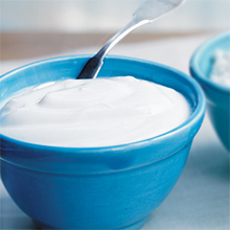Team:MIT
From 2008.igem.org
(→Project Description) |
(→Project Description) |
||
| Line 47: | Line 47: | ||
<hr class=divider> | <hr class=divider> | ||
==Project Description== | ==Project Description== | ||
| - | ''' goal is to engineer yogurt bacteria to prevent cavities. | + | '''Our goal is to engineer yogurt bacteria to prevent cavities. |
Teeth are covered in a complex biofilm containing many types of bacteria and glycoproteins. Of all the bacteria found in the biofilm, only one strain, ''Streptococcus mutans'' is proven to be harmful. ''S.mutans'' attatches to a glycoprotein in the biofilm, forms colonies, takes in sugars, and secretes lactic acid which breaks down the enamel of the teeth, causing dental cavities. A clinical study (Kelly CG et al.; Nature Biotechnol. 1999) isolated the protein that ''S.mutans'' uses to attach to the teeth and isolated the 20aa functional segment (p1025) that actually binds to the glycoproteins. p1025 competitively inhibits the binding of ''S.mutans'', causing other (unharmful) bacteria to grow in its place. This was found to prevent the recolonization of ''S.mutans'' for about 90 days. | Teeth are covered in a complex biofilm containing many types of bacteria and glycoproteins. Of all the bacteria found in the biofilm, only one strain, ''Streptococcus mutans'' is proven to be harmful. ''S.mutans'' attatches to a glycoprotein in the biofilm, forms colonies, takes in sugars, and secretes lactic acid which breaks down the enamel of the teeth, causing dental cavities. A clinical study (Kelly CG et al.; Nature Biotechnol. 1999) isolated the protein that ''S.mutans'' uses to attach to the teeth and isolated the 20aa functional segment (p1025) that actually binds to the glycoproteins. p1025 competitively inhibits the binding of ''S.mutans'', causing other (unharmful) bacteria to grow in its place. This was found to prevent the recolonization of ''S.mutans'' for about 90 days. | ||
Revision as of 09:53, 3 August 2008
Project DescriptionOur goal is to engineer yogurt bacteria to prevent cavities. Teeth are covered in a complex biofilm containing many types of bacteria and glycoproteins. Of all the bacteria found in the biofilm, only one strain, Streptococcus mutans is proven to be harmful. S.mutans attatches to a glycoprotein in the biofilm, forms colonies, takes in sugars, and secretes lactic acid which breaks down the enamel of the teeth, causing dental cavities. A clinical study (Kelly CG et al.; Nature Biotechnol. 1999) isolated the protein that S.mutans uses to attach to the teeth and isolated the 20aa functional segment (p1025) that actually binds to the glycoproteins. p1025 competitively inhibits the binding of S.mutans, causing other (unharmful) bacteria to grow in its place. This was found to prevent the recolonization of S.mutans for about 90 days. We are engineering Lactobacillus bulgaricus, a bacteria commonly found in yogurt, to produce and secrete this peptide. Although the peptide could simply be commercially added to yogurt, since production of this peptide by L. bulgaricus is independent, this mechanism will enable continuous production and remove the need for continuous addition of the peptide. Since a new batch of yogurt is made by using the bacteria from a small saved amount of the old batch, a continuous supply of teeth-cleaning yogurt will be made available immediately once the first batch is successfully engineered. The implications for such a biological system are enormous as it could revolutionize dental health care around the world. This creation is applicable to and useful for all people; most importantly this could be the key to surpassing concerns of cost and availability of necessary and effective dental health care in small-scale, underdeveloped rural communities. Also, by replacing the p1025 gene, this expression system can be used by L. bulgaricus to produce many other useful peptides in yogurt. Yogurt with modified bacteria will provide a cheap, efficient, and delicious way to distribute vitamins, vaccines and more. | |||||||||
|
| |||||||||
| Home | The Team | The Project | Parts Submitted to the Registry | Modeling | Notebook |
|---|
 "
"

